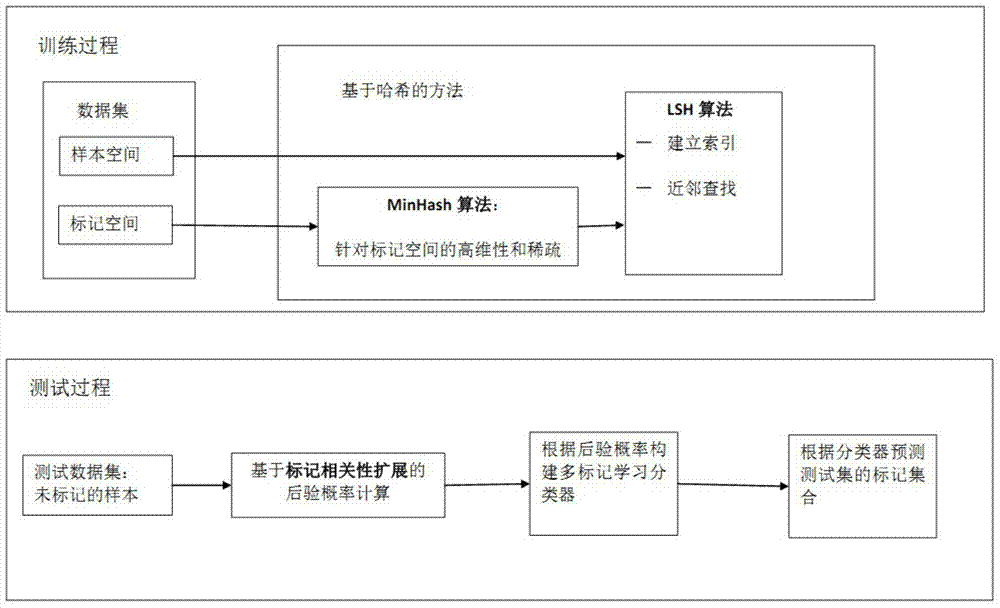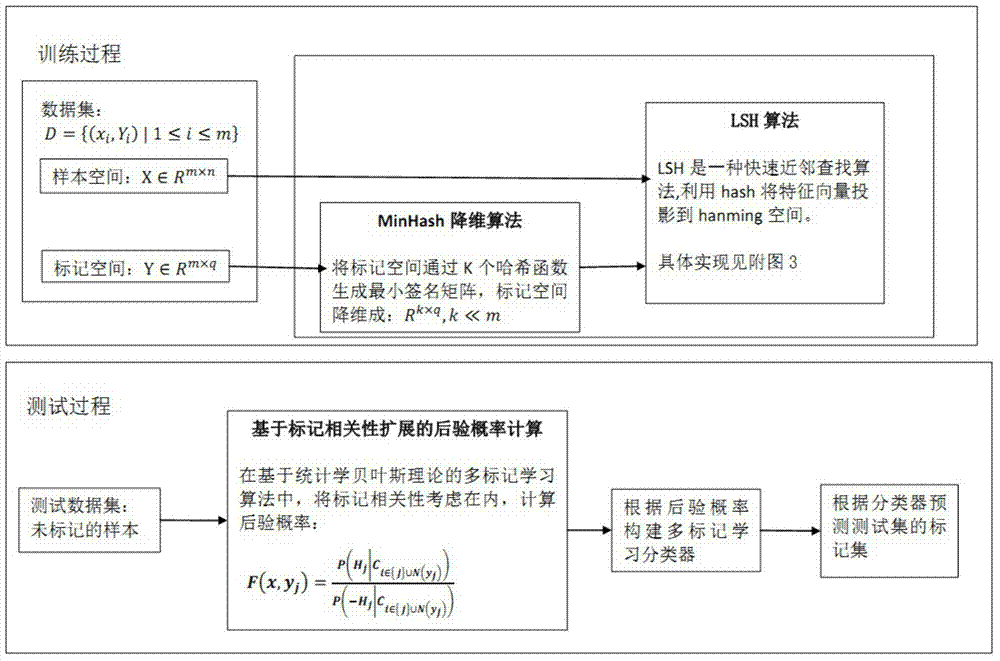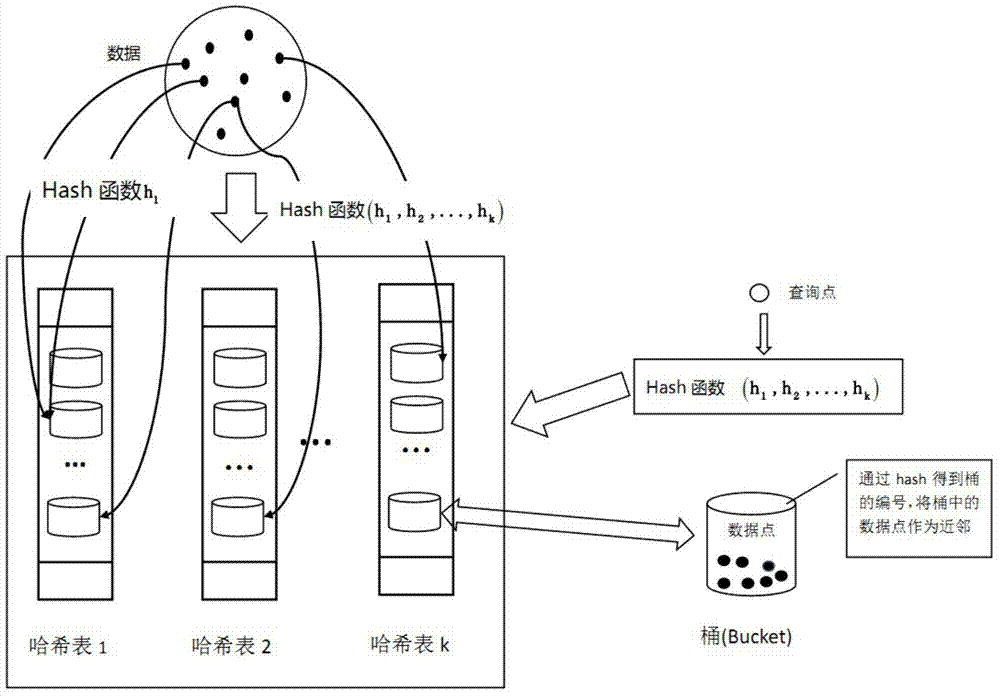Multi-label learning design method based on hashing method
A multi-label learning and design method technology, applied in computing, special data processing applications, instruments, etc., can solve problems such as high-dimensional and sparse label spaces, reduce time and space complexity, improve accuracy, and increase scalability sexual effect
- Summary
- Abstract
- Description
- Claims
- Application Information
AI Technical Summary
Problems solved by technology
Method used
Image
Examples
Embodiment Construction
[0031] The invention will be described in further detail below in conjunction with the accompanying drawings.
[0032] Such as figure 2 As shown, the present invention provides a design method based on the multi-label learning of the hash method, and the specific implementation steps of the method include the following:
[0033] (1) Tag correlation extension
[0034] In the multi-label learning algorithm based on Bayesian statistical theory, an important step is to calculate the posterior probability. Given a multi-label training set D={(x i ,Y i )|1≤i≤m} and test samples x, Y i is the corresponding sample x i The label set vector for the jth category y j (1≤j≤q), the formula for calculating the posterior probability based on Bayes' theorem is as follows:
[0035] f ( x , y j ) = P ( ...
PUM
 Login to View More
Login to View More Abstract
Description
Claims
Application Information
 Login to View More
Login to View More - R&D
- Intellectual Property
- Life Sciences
- Materials
- Tech Scout
- Unparalleled Data Quality
- Higher Quality Content
- 60% Fewer Hallucinations
Browse by: Latest US Patents, China's latest patents, Technical Efficacy Thesaurus, Application Domain, Technology Topic, Popular Technical Reports.
© 2025 PatSnap. All rights reserved.Legal|Privacy policy|Modern Slavery Act Transparency Statement|Sitemap|About US| Contact US: help@patsnap.com



